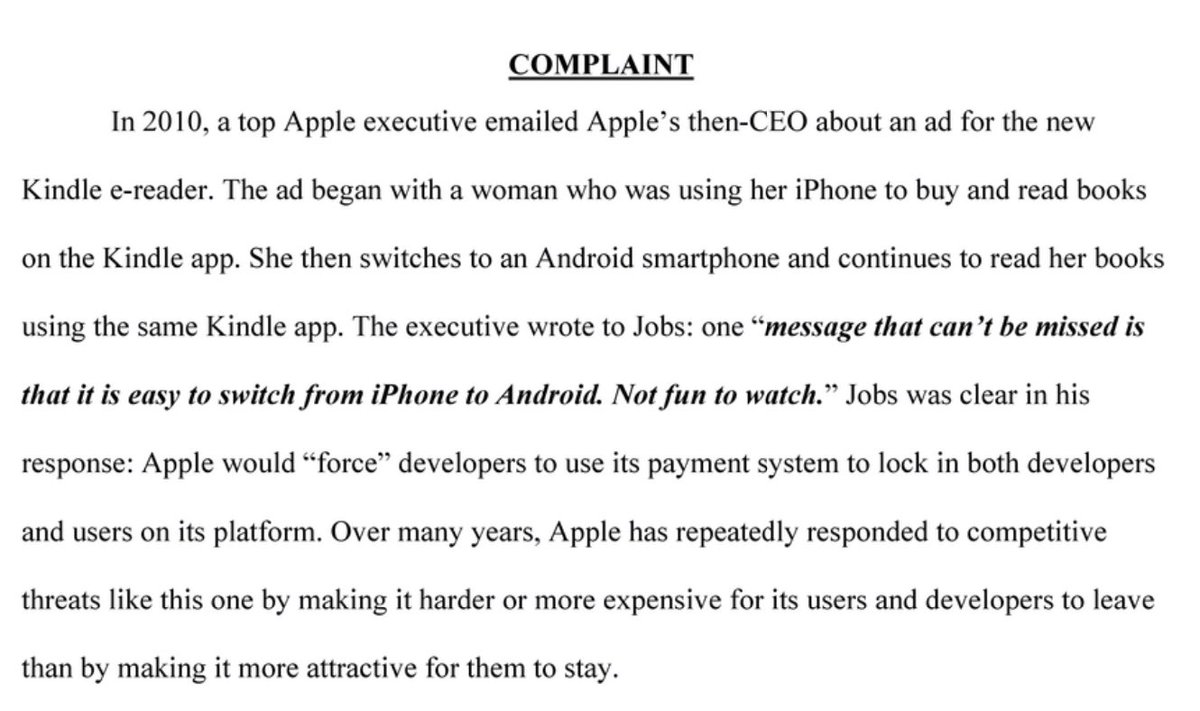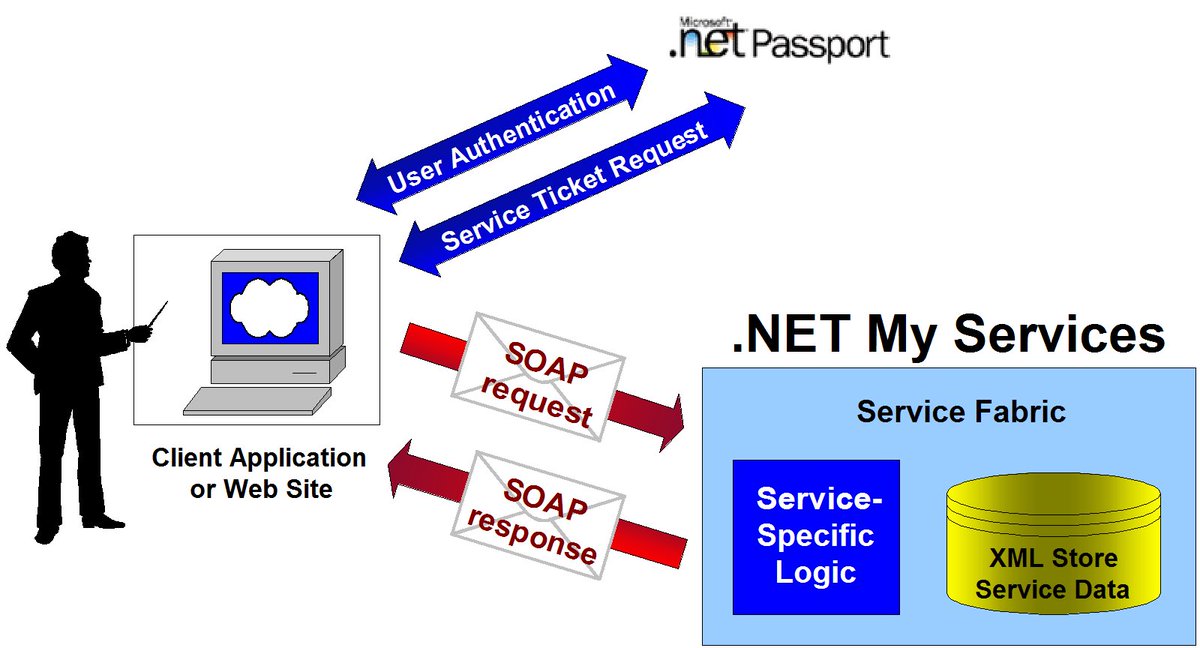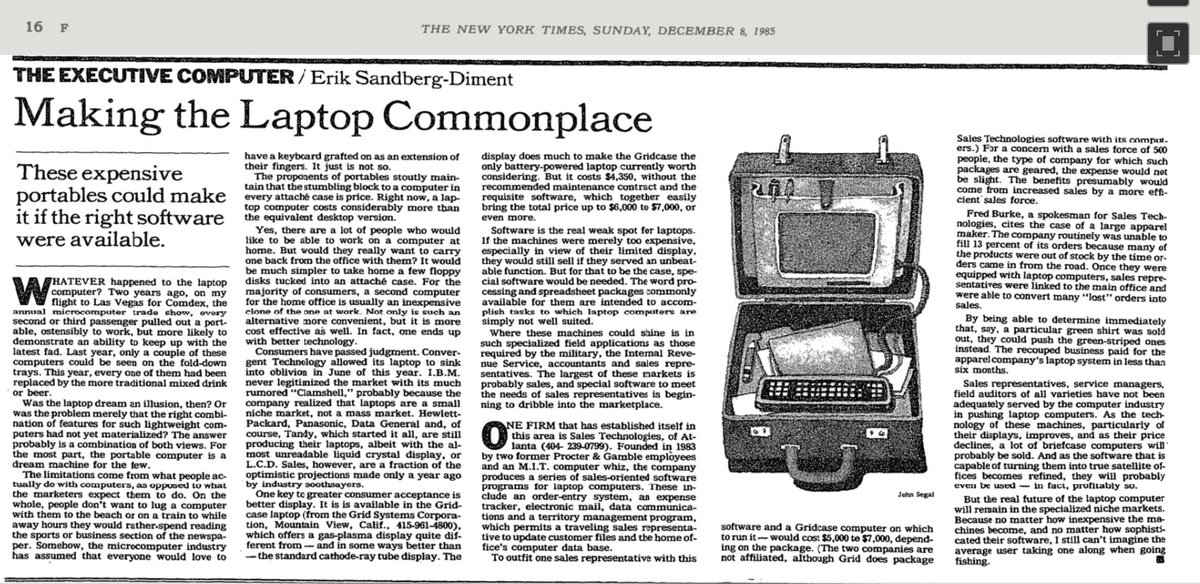Debates over work from home v hybrid v HQ are becoming increasingly polarized (duh). It seems either one gets it, or not, with little room to disagree. There's a reason for this and it is rooted in how disruptive forces take hold. A long 🧵 

2/ Change in work is part of broader change which is _disruption_ of how companies operate. The structure and design of Corps are rooted in *everything* that happened after WWII from an influx of labor, growth in housing, rise of computing, and even the military.
3/ Whole essays can be written about any one of those. For example, it should be no surprise that those schooled in WWII (literally) and came to run corporations would run those corporations like the military (see smile.amazon.com/Whiz-Kids-Foun…) 

4/ Or that the rise in suburban tract homes (that was clearly innovation!) would then lead to the assumption as well as infrastructure and implementation that one commuted to work. (just as immigration led to mega cities before that) 



5/ Or that the post-war application of airplanes to commercial aviation and later deregulation would clear the way to the incredible a rise of "let's get on a plane and discuss face to face" to the point where people could literally commute by airplane! 

6/ Or that the rise of computing would create a whole new set of jobs that focus on the inputs and outputs of computers (and the computers themselves) to run a business, then eventually new products made possible only because of computers. 
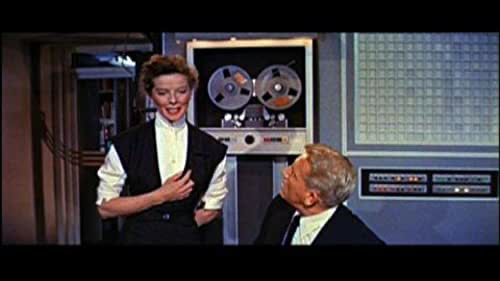
7/ When we look back at 1950-2000 we will see it as pre-internet or pre-software-defined-business era. Much time was spent taking tech and applying to hard parts of running businesses that were doing what had been done inefficiently, at local scale (eg accounting and logistics)
8/ But those difficult parts were the problems defined by the 1900-1950, The problems of figuring out just how to design, assemble, and distribute goods. Technology was applied to "automate" or "make efficient" those problems. It has been incredible.
9/ The disruption that took place was "scale" — corporations brought capabilities to make and distribute things globally, in a newly global market. Not every company or everything was part of that or needed to be (many things don't scale like this, but focus is corporations).
10/ While most of us assume corporations (eg big tech) as existing today, the idea of a Corporation was new post-war. Not simply the legal definition but the very nature of how work was done. Perhaps surprising, but the answer to future of work was once "The Corporation".
11/ Alfred Sloan wrote, perhaps even defined, the nature of a corporation relative to what he led General Motors through. The Table of Contents is literally the "how to manual" for the next 50 years: Organization, Product Cycle, Coordination, Growth, Financial Controls … 

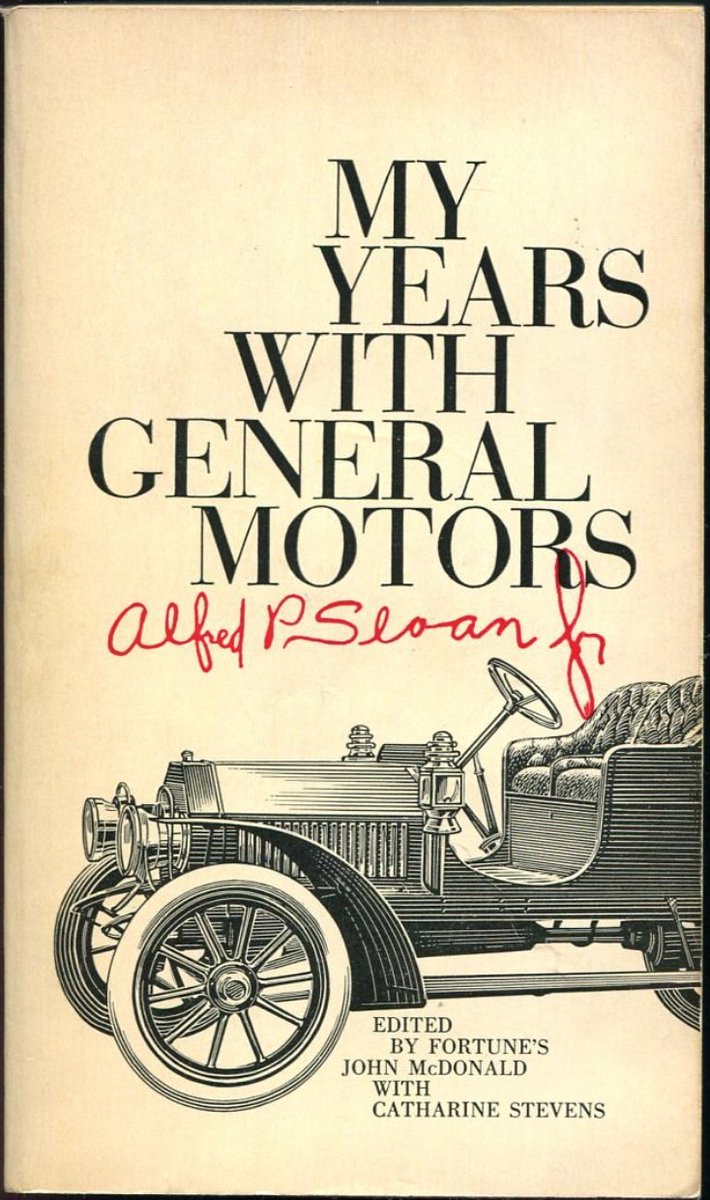
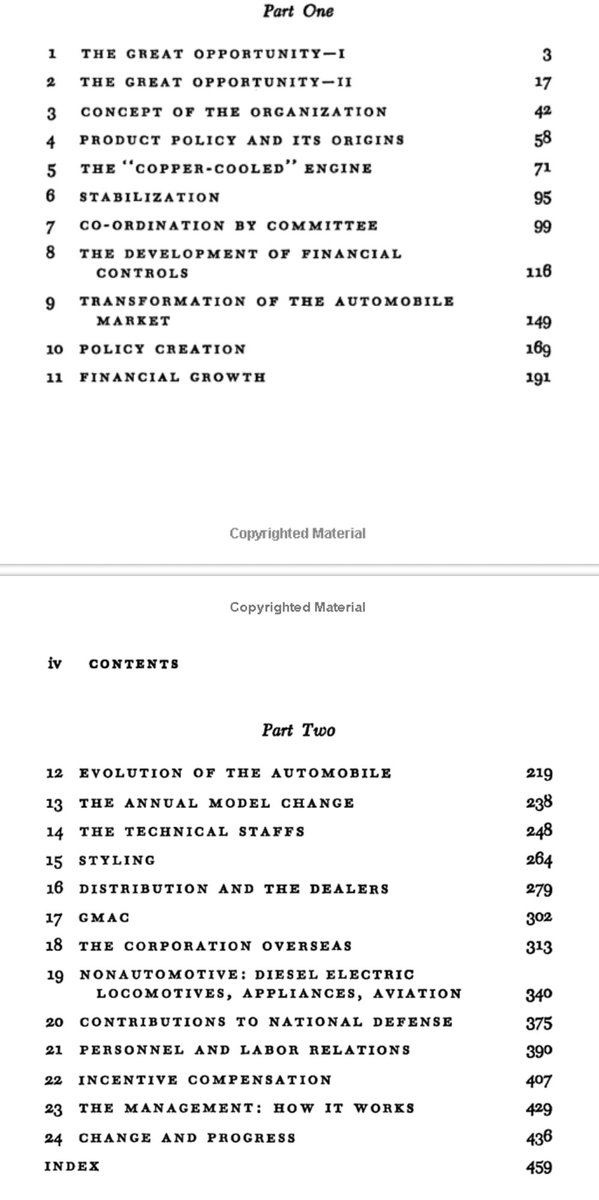
12/ What we know about disruption is it takes a very long time. In many ways GM's rise started with rise of accounting and international trade, going back to Medici Bank. That most important business tool took perhaps 500 years to fully disrupt and replace existing structures. 

13/ Early computing tools automated that. Importantly, if you were around in 1600 it is not likely you could have drawn a straight line from accounting to weekly staff meetings analyzing growth or determining positioning or finance. To get to Sloan took a lot of experiments.
14/ Really important: when people claim to know the future, it is rooted in making extrapolations from today and importantly what problems are solved by the tools/techniques of today. But innovation is the sum total of all these viewpoints and experiments.
15/ First 25 years of internet, in hindsight, were an era of "connecting" those innovations. What was once neat to be able to do within walls of a company or through a human interfacing with a machine are now possible to do machine to machine, and without humans--new opportunity.
16/ Walmart v Amazon might be the most obvious example of this. Walmart took computers and software and turned the elaborate processes of selecting merchandise, distributing it, monitoring sales, and so on and automated it per store. Amazon built one giant store with everything.
17/ The line from Walmart to Amazon is not straight or predictable, but it was exponential. And most of the entire time, "everyone" assumed that Walmart would just catch up. How did WMT not do same day delivery when the "warehouse" is 2 miles away from me?
18/ That is what disruption looks like—it is not linear or predictable and most importantly when it is happening no one knows it. The one thing we know is entities being disrupted claim to be doing the new thing everyone is talking about—BUT THEY ARE DOING IT THE OLD WAY.
19/ Second, is a tendency to view disruption as a single variable—amazon has a web site so walmart needs one. But Amazon had warebhouses, custom software, its own last mile shipping, and on and on. Disruption is never one variable, but a wholesale revisiting of all the variables.
20/ That is why the debate over remote work v hybrid v HQ is only part of the picture. It is very interesting and will forever change to something, but that is not where the focus should be. It is, however, why the large companies are the first to start looking to the old ways.
21/ In other words, the incumbent in this disruption is not the headquarters or office but the full list of structures and approaches of the company. Another example closer to home for me:
22/ PC architecture (microprocessor) replaced mainframe architecture. The whole time this was happening, the mainframe people said PCs could not do the things they did. PCs were the wrong approach--too simple, didn’t solve all the problems we spent 30 years solving.
NOTE/ Tough to count how many times we have gone through the mainframe is not dead yet. That isn't the point at all. It is not whether it still works but where is innovation happening. This from 2000 (dot com bubble) 

23/ In fact, mainframe people were right. But PC people set out to solve information and programming problems not "how do you do reliability of OS 370 card readers". In going after the same target ("accounting") with new architecture, whole new economics and solutions appeared.
24/ This story repeats with mobile phones. The fact that PCs and phones then go and add back *elements* of the old way (like reliability) is not a "told you so" moment but a "big deal who cares" one. Same problems exist but real value is in new solutions. (Continued)
25/ It is said the pandemic pulled forward a decade or more of "digital transformation". Yes. But what it really is going to be is the equivalent of what WWII did to the corporation or the microprocessor to mainframe.
26/ The question is not "work remotely" but what is the very structure of getting things done. We can't see it now but in 25 years corporations will run very differently. They will not be 3/5's HQ with everything the same. Why and how?
NOTE/ Many challenges have come up with remote work, particularly mental health. These will find resolutions or mitigations. Any change comes with it new sets of challenges, known and unexpected. It is the nature of change to address these.
27/ The "why" is kind of brutal but just is. Changing corporate models requires wholesale leadership change—it will require people who grew up natively with the internet and with the pandemic and then become the CEOs. Just like soldiers back from the war to run Corps.
NOTE/ I say this as one of those people. Of course people can change but to dismiss the value of not being burdened by the past or seeing all experience and patterns as equally valuable ignores the history of innovation.
28/Future leaders are working for people who are just trying to get things done using what worked before. They want to use tools of "remote work" to just keep things going. What things--the how? These are businesses software made more efficient, not software-defined businesses.
29/ Think of every aspect of building, distributing, selling, and so on. They are all based on the old problems of global scale—design collaboration is slow, manufacturing prototypes expensive, communicating with teams difficult, solving customer problems happens in person,…
30/ Every part of General Motors and Sloan's book are the right problems but solved using constraints set forth in…of all places…the Pentagon, the ultimate example of a "headquarters". Maybe that's how to run a country but there's no reason to run a company that way. 

31/ Whole notion of a product has been upended by networked development which enables remote. Not just making a product but choosing when and how to sell it. When you start networked you do everything differently. You experiment more because you can.
32/ Underlying the assumption of the corporation is that everything is "make or break" or "we get one shot, can't mess up". But that is no longer true. Yes bringing goods to market is costly, but how much of that cost was in trying to guess it was right because change impossible?
33/ We talk about the role of agile v. waterfall (total misrepresentation of past…I digress) but reality of Corporations is they are literally designed around the notion of a waterfall. Whether a team is "empowered" or not doesn’t matter if entire Corp is trapped by a waterfall
34/ Sacrosanct ideas the yearly strategic plan (or 5 year plan), competitive forces, budgets that span 1000's of people, aligning massive products that are hard enough to get done on their own, all come into question.
35/ Software from 1950-2000 was written as though we were building a factory. "Software is hard" and took a long time to get right and people used it forever. Some software will forever be like that, the way say airplanes are built. But most doesn't or shouldn't be.
36/ Yet, too many companies transforming into software companies are treating software as a) a way to be more digitally transformed and b) a huge investment like building a factory. They are doing that by applying old methods with new tools. Like adding HTTP to mainframes.
37/ Why build software thinking it will last 10 years? It might. But it likely won't. Will it not last 10 years if you don't plan on it lasting that long? Any old timer will tell you that no legacy code planned on being legacy code. So companies won't follow that process.
38/ Sloan (& IBM & Microsoft and…) were designed around a model of a Corp made up of lines of business and a platform. Everything had to be properly connected and coordinated with everything else. Guess what? Every time a company lost it was to someone NOT coordinated with them.
39/ That's an antiquated post-war company concept. Looking at new and innovative companies today, they are far more loosely connected. That is why they can easily [sic] adopt a remote working model.
40/ It can be quite puzzling to BigCo to hear feedback from next generation leaders that want to be remote first. It isn't just that they don't like commutes or offices or meetings—it is that they've seen a whole different approach to deciding what to make and how to make it.
41/ You know what this sounds like? It sounds like me complaining to my boss about having to use a mainframe to do a report when I can easily do it on a PC with a 1-2-3 spreadsheet. Or type a paper on a word processor. It just normal to me. My boss, not so much.
42/ This is what disruption looks like. It happens slowly at first, then very quickly. It seems impossible to imagine a different way to do things, then we're doing things in a different way.
Stay tuned for a whole new way to work. // END
Stay tuned for a whole new way to work. // END
Thread unrolled/archived below. While I don't have a soundcloud I do have a substack, "Hardcore Software" on the PC revolution. If you like stories of disruption, management, and tech change then I think you'll like it. Subscribe: hardcoresoftware.substack.com.
medium.learningbyshipping.com/disruption-at-…
medium.learningbyshipping.com/disruption-at-…
See also/ So what comes next? Wrote this essay about the changes that are due and can happen, but it takes a lot of effort. "Creating the Future of Work" link.medium.com/EuPiMKFmfhb
• • •
Missing some Tweet in this thread? You can try to
force a refresh





